Brigade looking to ride the wave of progressive Commercial Vehicle safety regulations
By Luke Willetts - 29th October 2024
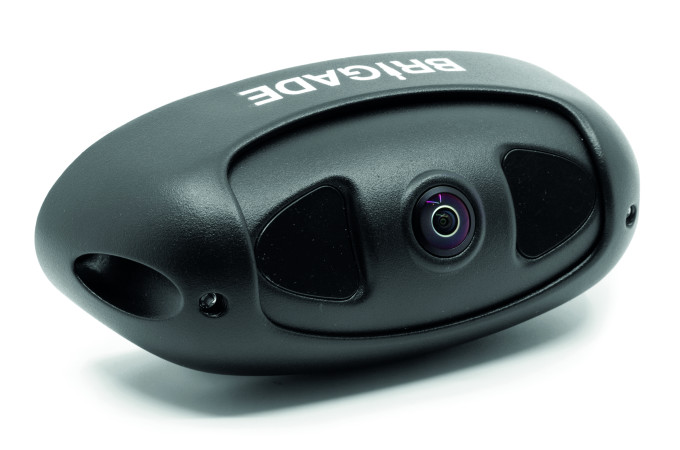
AI Camera
UK – Specialist electronic warning and safety device manufacturer Brigade Electronics Group Plc of South Darenth, Kent is expanding into the Japanese market. The company plans to capitalise on its reputation as a premium vehicle safety systems developer that provides advanced safety solutions, including cameras, sensors, and alarms, to reduce accidents in commercial vehicles. Recently, T&BB interviewed Henry Morgan, sales development manager at Brigade to understand better the strategy behind its entry into one of the most technology advanced countries in the world and the specific products set to be offered in this market segment.

Henry Morgan, sales development manager at Brigade
New product development for the Japanese market
The company is planning to blend two of its existing technologies to develop a bespoke product for the Japanese market. Essentially this new product is a fusion of the Backeye 360 AI camera system and Radar Predict into “Radar Predict PLUS”. Regulation 151 is specifically designed to address the greatest risk to cyclists, when moving alongside trucks in urban areas. The residual risk to cyclists is when stationary at junctions and is addressed by combining these two products.
Morgan described the Japanese market as “over double the population of the United Kingdom, and although about 60% bigger, has about half the amount of useable land”. This of course means that the potential opportunities for CV safety systems in the large densely populated urban areas, is vast. The Japanese have a thorough and precautionary approach to change but after several years Brigade is now working with two unnamed Japanese OEMs for potential integration of its solutions into their vehicles. One OEM subsequently asked Brigade to develop Radar Predict to not only comply with the new UNECE safety regulations but also address their identified residual risk. This resulted in a project to develop bespoke safety products for the market.
The initial trial of Radar Predict PLUS took place earlier last summer and further evaluations are due to start soon, Morgan stated. Other companies in Japan, Europe and North America are also keen to evaluate. He told us that integrating the AI camera hardware and software addresses two-thirds of the improvements. Getting the next-generation hardware into the sensing system in Q1 2025 is expected to address the remaining third. The product will also be available as a retrofit product through authorised distributors.
Radar Predict
In terms of the specific technologies being integrated, Brigade publicly launched Radar Predict at the 2023 Road Transport Expo (RTX), which took place at the NAEC Stoneleigh, in Warwickshire. In a bid to make the roads safer by reducing on-road collisions, the dual radar system uses a combination of radar technology and artificial intelligence (AI) to detect road objects, other vehicles and road users, and predict if a collision is likely to happen and if so, it then instantly notifies the driver with an audio and visual alert. Radar Predict makes detections over a very wide area, tracking objects to determine if they are fixed objects such as street furniture or a cyclist or pedestrian to promptly alert when within 5 metres from the side of the vehicle, 7 metres in front of the vehicle and up to 30 metres to the rear of the vehicle’s cabin. Radar Predict can be fitted on any vehicle, including rigid and articulated trucks, within 2 hours and meets both DVS proposals and UN Regulation 151 (Blind Spot Detection - 2019).
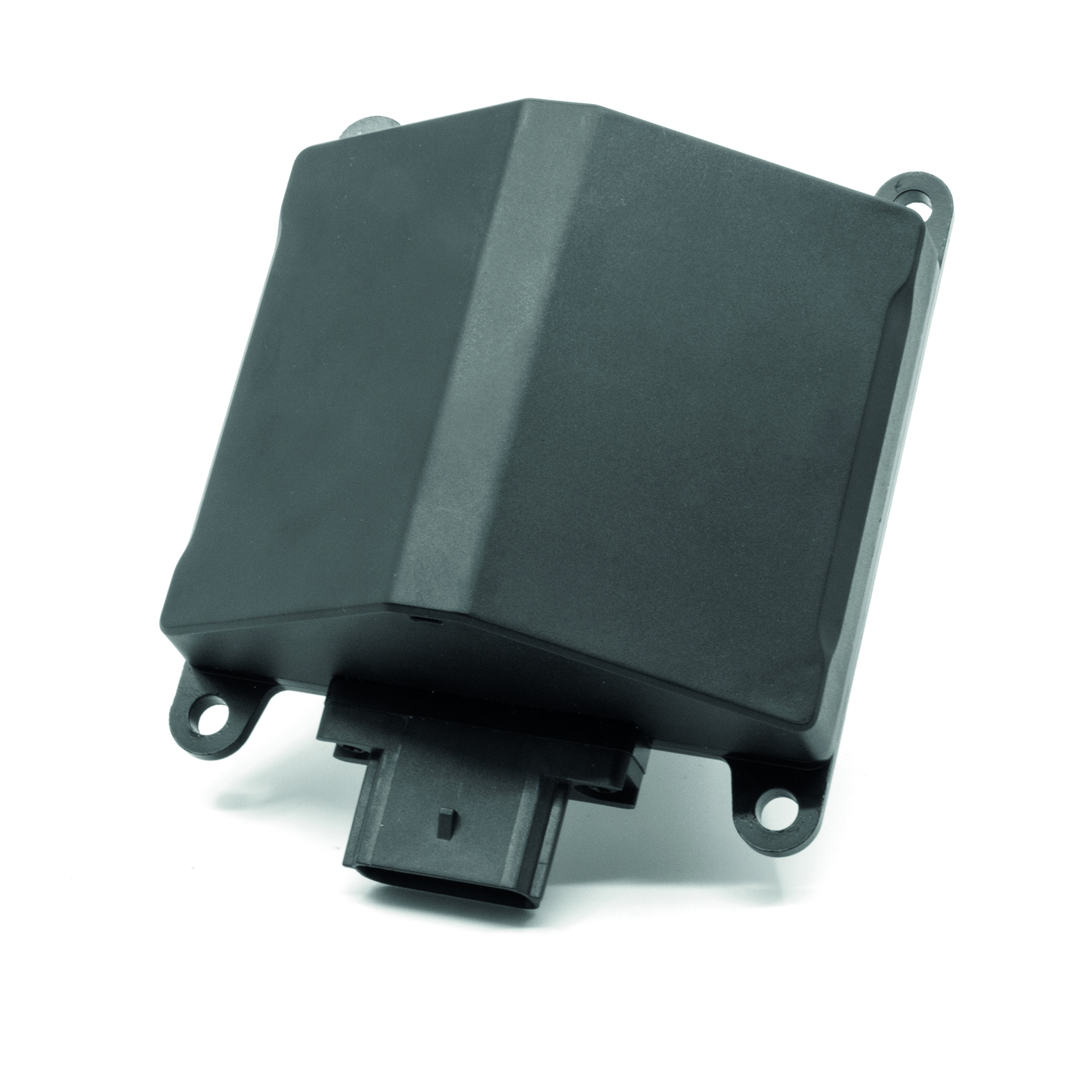
Radar Predict
AI Camera range
Integrating the radar with the company’s AI cameras has taken a lot of time and financial resources, according to Morgan. Selecting the right AI-powered cameras, with Radar Predict has enabled Brigade to address a large number of additional high-risk scenarios. Brigade recently launched its new generation of active blind-spot detection AI cameras known as Backeye 360. This intelligent four-camera system is powered by machine learning and AI. The cameras provide the driver with a complete 360-degree view of their vehicle in a single image. Even when a driver looks in a mirror, attentional blindness and drift behaviour means a person is not always seen. The AI 360 alerts the driver and details of events can be reported to help with risk management.
Brigade is using its Backeye 360 AI camera because it uses three different CAN signals which can be integrated with different devices. Whether it is a cyclist or a pedestrian, the system will detect a person and then alert the driver. Importantly, the system will not detect anything else, minimising false alerts.
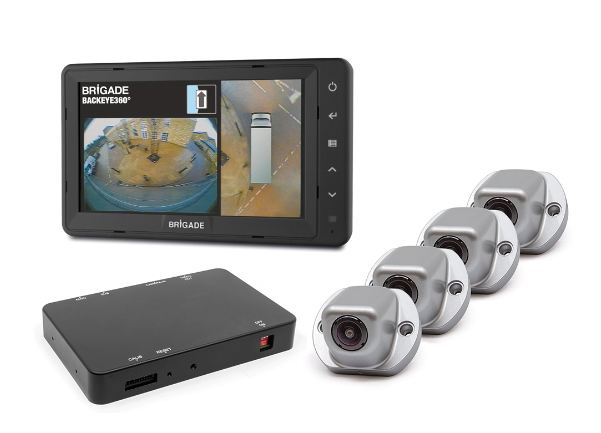
Backeye 360
Regulation as a driver of growth
Morgan said that while the adoption of Radar Predict is driven by legislation, many companies are keen to go one or two steps further to make the roads safer by helping develop Radar Predict PLUS.
Japan, like many European countries, has adopted UNECE Regulations (151, 158, 159); standards related to truck and bus vehicle safety systems. Regulation R151 is Blind Spot Information System for detecting cyclists, R158 is reversing safety and, R159 is a Move Of Information System (MOIS) to alert drivers when pedestrians or cyclists enter the area of risk when the vehicle is stationary at a junction or crossing.
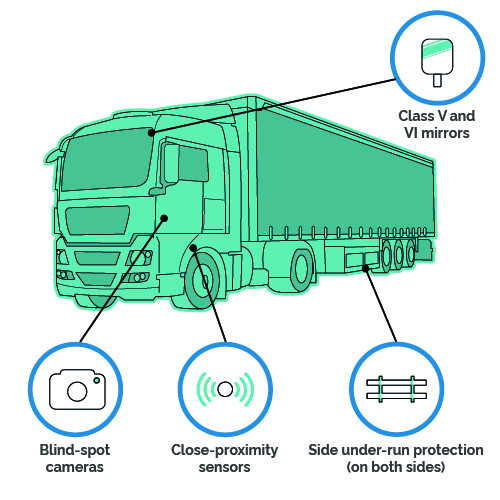
DVS regulation
London
Brigade sees London’s Direct Vision Standard* (DVS) for HGVs (Heavy Goods Vehicles) advocated by Transport for London as the market leading set of requirements globally.
Initially set to be implemented in October 2024, the grace period has been extended to May 2025 for hauliers in London to adopt new DVS standards to operate on the streets of the capital. All heavy vehicles over 12 tonnes will require a permit to drive into Greater London, including vehicles from outside of the UK. If a vehicle has a DVS rating of less than 3 stars, operators will need to fit extra safety devices to comply, such as radars and sensors that alert drivers to vulnerable road users who are in a vehicle’s blind spot. This added equipment should give the driver better vision, thereby improving road safety. Even though companies such as Brigade offer these products, lobbying groups such as the RHA have been questioning whether the availability of DVS kits and the engineers to install these systems is currently available to meet the deadline.
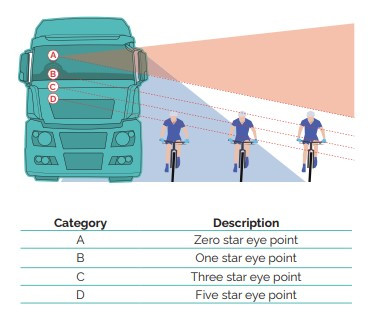
DVS star ratings
Recently, the company successfully passed independent testing for Phase Two of the Direct Vision Standard (DVS) carried out by Loughborough University. Key products like Front Radar and Radar Predict met the new Progressive Safe System (PSS) requirements for Blind Spot Information Systems (BSIS) and Moving Off Information Systems (MOIS). These products were tested under rigorous conditions, simulating real-world scenarios with vulnerable road users like cyclists, ensuring that all sensors accurately detect and alert when users are in designated coverage zones as defined by the PSS.
*The Direct Vision Standard and HGV Safety Permit Scheme are part of the Mayor of London's Vision Zero plan to eliminate all deaths and serious injuries on London's transport network by 2041. The DVS measures how much an HGV driver can see directly through their cab windows. This is expressed as a star rating from zero (limited) to five (good) direct vision, indicating the level of risk to vulnerable road users, such as people walking and cycling. All heavy goods vehicles over 12 tonnes will need to have a three-star rating or fit a Progressive Safe System to operate in Greater London from May 4, 2025.
Brigade rebrands
As part of its strategy to modernise and align with the rapidly advancing field of vehicle safety technology, Brigade has introduced a refreshed brand identity which includes a new logo and updated visual elements designed to reflect its evolution from a hardware supplier only, to a technology-first company. The rebranding is also part of the company's preparation for its 50th anniversary and signals its readiness to remain at the forefront of innovation in the industry. This move aims to increase brand visibility and strengthen its connection with both current and future customers.
Simon Collinson, Marketing Director for Brigade Electronics said:
Our new logo and visual identity signify our readiness for the next chapter in the technological revolution. Rebranding can be challenging, but it also presents a unique opportunity to increase brand visibility and reinforce our dedication to technological advancement.

Brigade's new logo



